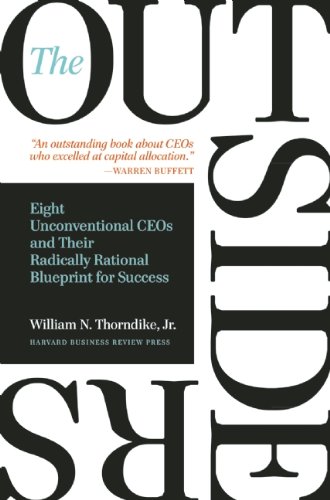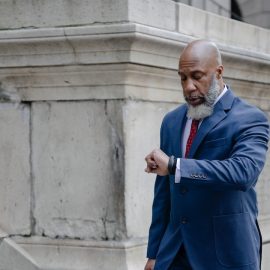

This article is an excerpt from the Shortform summary of "The Outsiders" by William N. Thorndike, Jr. Shortform has the world's best summaries of books you should be reading.
Like this article? Sign up for a free trial here .
Tele-Communications Inc. (TCI) was a cable television provider founded in 1958. It grew to be the largest cable company in the country, owning both cable providers and content programming. It was acquired by AT&T in 1999 for $43.5 billion in stock and, through a series of transactions, would ultimately become Comcast.
As CEO from 1972 to 1991, John Malone pursued a virtuous cycle strategy—grow subscriber count through acquisitions of cable providers, which would give scale to negotiate lower fees with content providers, which would make acquisitions of cable companies further cheaper.
TCI Performance
From 1973 to 1998, Tele-Communications Inc. (TCI) showed a 30.3% annual return rate, compared to 14.3% for the S&P 500 and 20.4% for public cable companies.
$1 invested at the beginning would have been worth $900 by 1998. This outperformed the S&P by 40 times, and his peers by 5 times. The TCI performance
History: Tele-Communications Inc.
TCI company was founded in 1956 by Bob Magness and had gone public in 1970. In 1973, when Malone joined as CEO, it had 600,000 subscribers and was the #4 cable company in the US. It had taken on a troubling amount of debt—17 times revenue—and was dangerously close to bankruptcy.
1973-1977: Stabilization
Malone’s first priority was to keep Tele-Communications Inc. out of bankruptcy. He instituted a new lean culture focused on financial discipline, estimating that growing subscribers by 10% per year while maintaining margins would keep them out of bankruptcy. He maintained frugality at headquarters, keeping just a single receptionist and grouping multiple executives in the same motel room when traveling.
Characteristic of outsider CEOs, Malone had a COO, J.C. Sparkman, who enforced budgeting and cash flow benchmarks at the operating divisions. Managers who underperformed were fired.
Over his first 4 years, Malone pushed TCI to produce the highest margins in the cable industry and saw consistent subscriber growth and cash flow.
1977-1990: Growth
Once Tele-Communications Inc. stabilized, Malone could pursue his master strategy: a virtuous cycle of growth.
At cable companies, the largest expense (40% of operating expenses) was paid to content suppliers (called programmers) like HBO and MTV. Larger cable providers were able to negotiate lower fees per subscriber. Malone realized that the key was to increase size, which would allow for increasingly better business economics, which would in turn allow for increased size.
Here’s how the virtuous cycle worked in more detail:
- Buying more cable systems would lead to more subscribers.
- This would lead to lower programming fees per subscriber, which would increase cash flow.
- Higher cash flow allowed the company to take on more debt, which could be used to buy more cable systems.
- This would further improve programming fees, and so forth.
In essence, larger cable companies could pay more for acquisitions than smaller competitors, since they could extract more value from them.
Malone executed the strategy relentlessly, acquiring 482 companies from 1973 to 1989 (this was a rate of one every two weeks). His sole focus was on acquiring subscribers at good prices.
Maintaining financial discipline, Malone avoided the costly competitions for urban markets, instead focusing on rural and suburban areas. He felt other cable companies were bidding up the price of urban markets, thus making them unprofitable; indeed, when years later the urban companies failed under too much debt and low profits, Malone acquired them at much lower prices, leading to better economics.
In 1982, Tele-Communications Inc. became the largest cable provider, with 2.5 million subscribers.
Joint Ventures
In addition to growing subscribers, Malone was interested in partnering with cable programmers. He took minority stakes in new programming businesses, in exchange for capital and access to Tele-Communication Inc.’s subscriber scale. Thus Malone built partnerships with rising channels such as BET, Discovery, and QVC. He was unique among cable companies for doing so at the time. These investments would be a large part of TCI’s ultimate value.
1990s: Spinoffs and Sale
Through the 1990s, a shifting environment put a damper on the cable industry. New regulation limited cable rates and access to debt for cable companies, which stifled growth for TCI communications. Furthermore, the cable industry faced increasing competition from satellite television.
Realizing that better opportunities might lay outside cable, Malone shifted his focus:
- He helped create two new businesses: Teleport, a telephone service, and Sprint/PCS, a partnership with Sprint for cellular service. These would later generate significant value—Teleport was sold to AT&T for $11 billion (a 28x return on investment) and Sprint/PCS was sold to Sprint Corp. for $9 billion.
- He spun off 14 non-core businesses; for instance, minority investments in programming were packaged as Liberty Media. He believed this would increase transparency into the operating divisions of TCI and reduce regulatory antitrust attention.
- He contracted General Instrument to produce 10 million set-top boxes that would enable competition with satellite TV, in exchange for 16% equity in the company. Motorola later acquired General Instrument for $11 billion in1999.
As the 1990s wore on, Malone became increasingly concerned about Tele-Communication Inc.’s future. In addition to the regulation and competition from satellite television, TCI communications in rural cable networks were also wearing down and would need to be upgraded at significant expense. He also didn’t have a clear successor (his COO Sparkman retired in 1995).
In 1998, he found a buyer in AT&T and negotiated a striking deal—$43.5 billion in stock, which was 12 times EBITDA and $2,600 per subscriber. In addition, he negotiated a long-term deal for Liberty Media’s programming on AT&T cable.
Throughout his time at TCI communications, John Malone improved TCI performance. Due to his meticulous planning and aggressive approach, John Malone stabilized and then improved TCI performance, and took the TCI company to unprecedented heights.

———End of Preview———
Like what you just read? Read the rest of the world's best summary of William N. Thorndike, Jr's "The Outsiders" at Shortform .
Here's what you'll find in our full The Outsiders summary :
- What great CEOs like Warren Buffett do that average CEOs don't
- How to master the art of capital allocation
- How to be a great manager that your team is excited to work with






